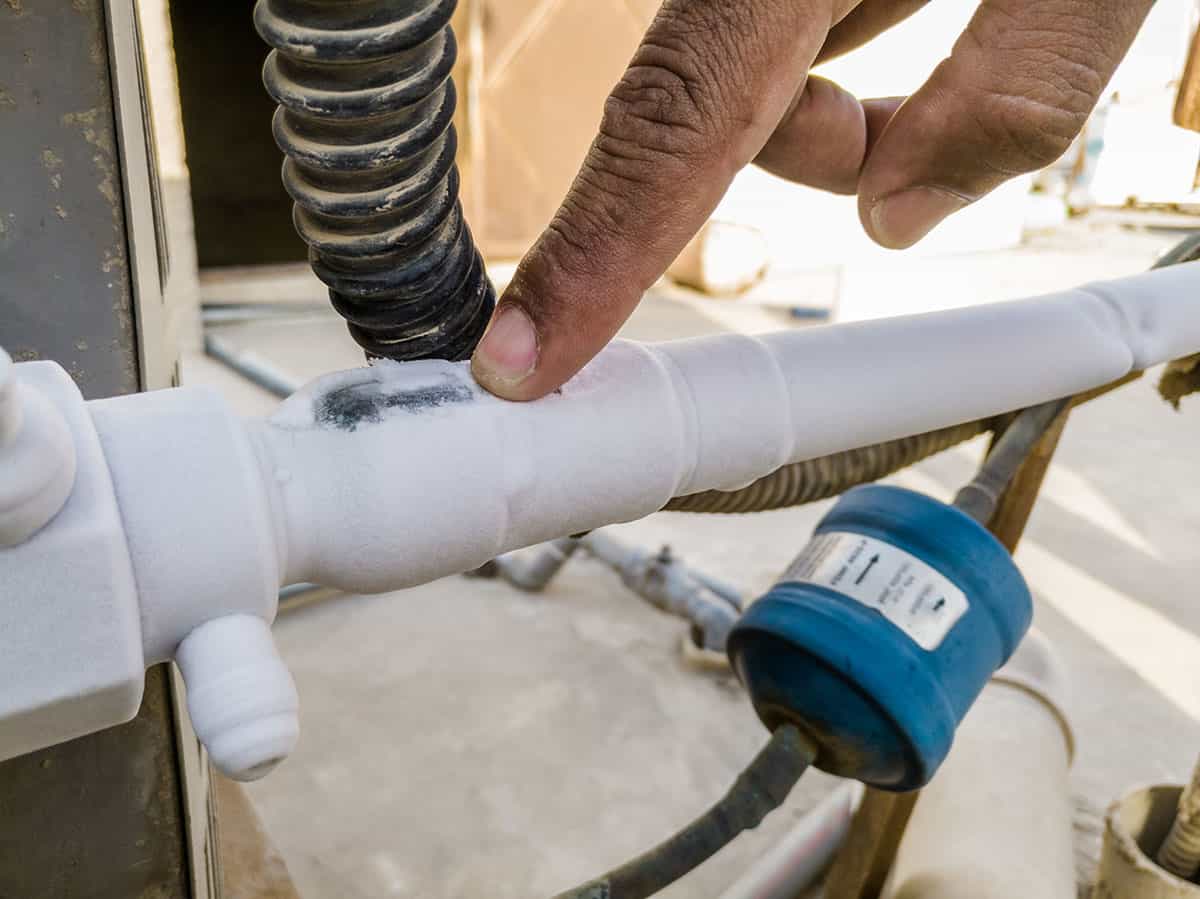Presented here in the next paragraph you'll find lots of sound information and facts with regards to Have a Frozen AC Line? Here’s How to Fix It.

Intro
Finding that your air conditioning pipeline is frozen can be concerning, specifically during warm summer months when you rely on your air conditioner the most. Understanding what to do in such a scenario is important to prevent additional damage to your air conditioning system and ensure your comfort inside.
Comprehending the Causes
Numerous elements can contribute to the cold of an AC pipeline. Recognizing these causes can assist you resolve the issue efficiently.
Absence of Airflow
One usual root cause of an icy a/c pipe is inadequate air flow. When the air flow over the evaporator coil is limited, it can trigger the coil to drop below freezing temperature, bring about ice development on the pipeline.
Reduced Refrigerant Levels
Not enough cooling agent levels in your AC system can also cause an icy pipe. Reduced cooling agent levels can create the stress in the system to drop, bring about the cold of moisture on the evaporator coil.
Winter Conditions
In colder environments, freezing temperature levels outside can contribute to the cold of a/c pipes. If your a/c unit is not appropriately insulated or if there are leakages in the ductwork, cool air can infiltrate the system, creating the pipeline to freeze.
Dirty Air Filters
Filthy or clogged up air filters can restrict air flow in your air conditioner system, leading to different problems, consisting of an icy pipeline. It's necessary to change or clean your air filters routinely to make sure correct airflow and stop ice build-up.
Signs of a Frozen Air Conditioning Pipe
Acknowledging the signs of a frozen AC pipeline is crucial for prompt activity.
Lowered Airflow
If you see a substantial decline in air flow from your vents, it could indicate a frozen pipeline.
Ice Buildup on the Pipe
Noticeable ice build-up on the refrigerant line or the evaporator coil is a clear indication of an icy a/c pipe.
Weird Sounds from the Unit
Uncommon sounds, such as hissing or gurgling, originating from your a/c unit can signify that there's ice present on the pipe.
Immediate Actions to Take
When confronted with an icy air conditioning pipeline, it's necessary to act promptly to prevent additional damages to your cooling system.
Shutting off the a/c
The first step is to shut off your air conditioning system to avoid the system from running and aggravating the concern.
Checking for Blockages
Examine the area around the interior device for any blockages that might be blocking airflow, such as furnishings or drapes.
Thawing the Pipe
You can utilize mild techniques like positioning towels taken in cozy water around the frozen pipe to aid thaw it slowly.
Safety nets
Taking preventive measures can help prevent future events of a frozen air conditioner pipe.
Regular Maintenance Checks
Set up regular upkeep contact a professional HVAC service technician to ensure that your air conditioning system is running successfully.
Changing Air Filters
On a regular basis change or cleanse your air filters to prevent air flow limitations and keep ideal performance.
Insulating Exposed Pipes
If your a/c pipelines are subjected to cool temperatures, consider shielding them to prevent cold throughout cold weather.
Seeking Professional Help
If DIY approaches stop working to resolve the concern or if you're not sure about just how to proceed, it's finest to look for help from a certified HVAC specialist.
When DIY Methods Fail
If your attempts to thaw the pipe or address various other concerns are not successful, it's time to call in a professional.
Relevance of Hiring a Professional HVAC Technician
A qualified HVAC service technician has the experience and devices required to diagnose and fix problems with your air conditioning system safely and properly.
Final thought
Dealing with an icy AC pipeline can be a discouraging experience, but understanding just how to respond can aid minimize damages and recover comfort to your home. By comprehending the reasons, recognizing the indications, and taking punctual action, you can efficiently resolve the concern and prevent future incidents.
What to Do If Your AC Line Is Frozen
Make Sure All Supply and Return Air Vents Are Open
If you notice problems with airflow, the first thing you should do is check your supply and return vents. Supply vents distribute clean, conditioned air throughout your home. As this air becomes stale, it’s pulled into the return vent, where it’s reconditioned before being sent back out through the supply vent.
When these vents are closed, air won’t flow in the home. Before examining your AC, check the vents in every room and ensure they’re all open.
Check for a Dirty Air Filter
Another possible cause of limited airflow is a dirty air filter. Your air conditioner’s filters catch elements you don’t want to breathe in, such as dirt and dust. Over time, filters can become clogged, ultimately blocking air from flowing in and out. The lack of airflow can then cause the entire coil to freeze and will completely restrict any air from moving through it. The AC may need to be powered off for one to two days to allow the coil to thaw after replacing the filter to allow proper functioning of the unit. This debris can also accumulate on your AC’s evaporator coil, requiring a more serious repair. In general, air filters should be cleaned regularly (about every two weeks).
Assess Your Outdoor Unit
In addition to checking your AC, assessing the outdoor unit is a good idea. Also known as the condensing unit, it works with your interior unit to release heat outside. An issue with the outdoor unit can result in rising internal temperatures.
Overgrown Shrubs or Clogged Leaves
From leaves and twigs to shrubs and debris, there’s no shortage of outdoor elements that can accumulate around your condensing unit. When these elements get lodged inside the unit, they can block airflow. Fortunately, removing the blockage can solve the problem.
Sounds of a Broken Fan
Shrubs and leaves aren’t the only things that can impede your outdoor unit’s airflow. If the fan is broken, the unit won’t be able to properly get rid of heat — which means the internal temperature won’t go down. First, make sure the fan is spinning. If it is, check for the following sounds of a broken fan:
Buzzing Rattling Screeching Hissing Clicking Preventative Measures
Nobody wants to deal with a frozen AC line. In addition to causing problems with your air conditioner, they require professional repairs. On the bright side, there are preventative measures you can take to help ensure this issue doesn’t arise in the first place.
https://www.coopergreenteam.com/blog/what-to-do-if-ac-line-frozen

I was made aware of that write-up on Air Conditioner Frozen? How To Fix your Frozen AC Line from an acquaintance on a different site. Sharing is nice. One never knows, you may be doing someone a favor. Thank you for going through it.
Schedule